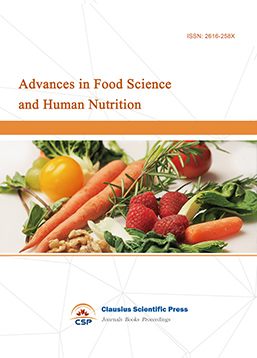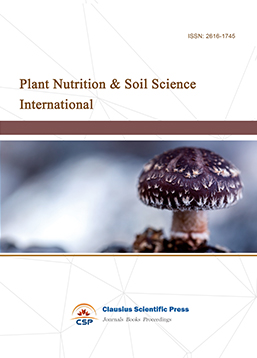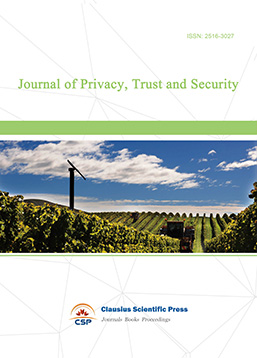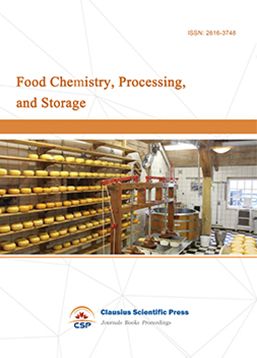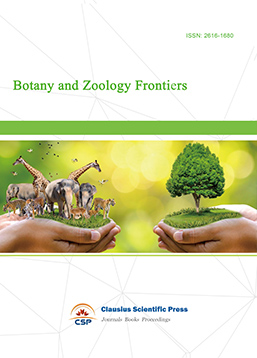Study on the Effect of Sodium Nano Lignin Sulfonate on the Growth of Wheat Seedlings under Zinc Stress
DOI: 10.23977/jmcs.2023.020105 | Downloads: 7 | Views: 360
Author(s)
Zhuo Wang 1
Affiliation(s)
1 Dalian Municipal Utilities Service Center, Dalian, 116000, China
Corresponding Author
Zhuo WangABSTRACT
In addition to mercury, cadmium, lead, chromium and metalloid arsenic, which are biotoxic heavy metals, the environmental hazards of general heavy metals such as zinc, copper, nickel and cobalt, which are toxic to some extent, have also attracted widespread attention in recent years. Among them, the wastewater discharged from tannery, electroplating and zinc salt production has also caused harmful zinc pollution to the environment. In this study, sodium lignosulfonate with heavy metal adsorption function was used to prepare nano-sodium lignosulfonate preparations by means of nanotechnology, aiming to improve its adsorption rate of heavy metal ions and utilization rate of the preparations to a greater extent, reduce the use of adsorbent materials, reduce the operational burden and cost investment of environmental treatment, and also provide useful exploration and research for the agricultural use of the treated products.The main research works were (1) preparation of nano-sodium lignosulfonate formulations; (2) characterization of morphological structures of nano-sodium lignosulfonate formulations by laser pens, scanning electron microscopy, and optical microscopy; (3) treatment solutions of nano- and non-nano-sodium lignosulfonate formulations for Zn2+ adsorption were used to treat wheat seeds, and their effects on wheat germination and seedling growth under Zn ion stress were investigated .The results showed that (1) the prepared nano-adsorbents exhibited homogeneous fine granularity and uniform dispersion with particle size ranging from about 20 nm to 60 nm under room temperature neutral conditions; (2) the adsorption of the nano-formulations was higher than that of the non-nanoproducts under the same conditions. (3) The effect of nano-sodium lignin sulfonate was found to be better than that of non-nanopreparations for the alleviation of Zn stress by seedling trials in wheat, and the best effect was obtained when the addition amount was 30 ml.
KEYWORDS
Sodium nanolignosulfonate; zinc stress; wheat seedling treatment; seedling growthCITE THIS PAPER
Zhuo Wang, Study on the Effect of Sodium Nano Lignin Sulfonate on the Growth of Wheat Seedlings under Zinc Stress. Journal of Modern Crop Science (2023) Vol. 2: 32-42. DOI: http://dx.doi.org/10.23977/jmcs.2023.020105.
REFERENCES
[1] Ma Rongxuan, Li Jizhong. Application of nanolay technology and its materials in environmental protection [J]. Environmental Science and Technology, 2006. 29(7): 112-115.
[2] Kirchner K, Schlachter U, Rehm H J. Biological purification of exhaust air using fixed bacterial monocultures [J]. Applied microbiology and biotechnology, 1989, 31(5-6): 629-632.
[3] Hu Weiwu, Feng Chuanping. Application of nanomaterials and nanotechnology in environmental protection [J]. New Chemical Materials, 2007, 35(3): 14-16.
[4] Adrino D C. Trace element in the terrestrial environment [M]. Spring-Vorlag New York Heidelbery Berlin, 1986.
[5] Sun Guifang, Yang Guangsui. Progress in the study of zinc in soil plant systems [J]. Journal of South China University of Tropical Agriculture, 2002, 8(2): 22-30.
[6] Lin YL, XueJH. Study on the morphology of Zn in soil [J]. Rural Ecology, 1993, 1:30-32.
[7] Liu JX. Effects of zinc on the growth and some physiological characteristics of wheat seedlings [J]. Journal of Gansu Science, 2004, 16(1): 49-51.
[8] Xu Qinsong, Shi Guoxin, Du Kaihe. Study on the relationship between free radical peroxidative damage and ultrastructural changes in Plantagoovata cells under zinc stress [J]. Journal of Botany, 2001, 18(1): 597-604.
[9] Wang Aijun, Liu Dongchen, Zhang Fenghua. Effects of zinc in soil environment on spring wheat [J]. Agricultural Environmental Protection, 1998, 7(3): 13-15.
[10] Bai L. Y., Wei D. J., Hua L. H. et al. Uptake distribution of Zn65 in spring wheat on high Zn soil and its inter-root effect [J]. Journal of Nuclear Agriculture, 1999, 13(6): 353-356.
[11] Davis R D. Adsorption of Cu2+, Ni2+ and Zn2+ by plant grown in contaminated soil[J]. Sci. Food and Agric, 1979, 30: 937-947.
[12] Wang J, Evangelou B P, Nielsen M T etc. Computer-simulated of possible mechanisms for sequestering metal ion activity in plant vacuoles II: Zinc [J]. Plant Physiol, 1992, 99: 621-626.
[13] Liu Xiaoqiu. Modification and application of lignin [D]. Changchun: Changchun University of Technology, 2008.
[14] Li Zhongzheng, QiaoWeichuan. Current status and development of industrial lignin resource utilization [J]. China Paper, 2003, 22(5): 47-51.
[15] Qiu Zengchang, Wang Haiyi. Current status and progress of lignin application research [J]. Southwest Paper, 2004, 33(3): 29-33.
[16] Lv Xiaojing, Yang Jun, Wang Dizhen et al. New advances in high value-added applications of lignin [J]. International Paper, 2001, 20(6): 56-58.
[17] Yi Shouzhi, Shi Shulan, Li Cuizhen. New advances in the separation and utilization of lignin from pulp waste streams [J]. Chemical Progress, 2001, 2(5):10-14, 58.
[18] Jin YC. The development and utilization of industrial lignin [J]. Forestry Science and Technology Development, 2002, 16(3):9-10.
[19] Gargulak J. D., Lebo S. F. Commercial use of lignin-based materials, in: Lignin: Historical, Biological, and Materials Perspectives, ACS Symposium Series 742, Washington, DC, 2000, 304-320.
[20] Jairo H. Lor, Wolfgang G. Glasser. Recent Industrial Applications of Lignin: A Sustainable Alternative to Nonrenewable Materials [J]. Journal of Polymers and the Environment, 2002, 10(1/2): 39-48.
[21] Hilttermann A., Kharazipour A. Modification of lignin for the production of new compounded materials [J]. ApplMicrobiolBiotechnol. 2001, 55(4):387-394.
[22] Heather D. Embree, Tianhong Chen, Gregory F. Payne. Oxygenated aromatic compounds from renewable resources: motivation, opportunities, and adsorptive separations [J]. Chemical Engineering Journal, 2001, 84(2): 133-147.
[23] Yang J, Lv XJ, Wang DZ. Application of lignin in plastics [J]. Polymer Bulletin, 2002, (4):53-60.
[24] Orlandi M, Canevali C, Rindone B, et al., Biomimetic approach to lignin degradation: a mechanistic study of Metallosalencatalysed oxidation of lignin and lignin model compounds, 7th European Workshop on Lignocellulosics and Pulp, 2002, 369-373.
[25] Yu Hongyan, Zeng Guangming, Niu Chenggang, et al. Progress of bacterial degradation of lignin. Environmental Science and Technology [J], 2005, 28(2): 104-109.
[26] Mohan D, Pittman Jr C U, Steele P H. Single, binary and multi-component adsorption of copper and cadmium from aqueous solutions on Kraft lignin—a biosorbent[J]. Journal of colloid and interface science, 2006, 297(2): 489-504.
[27] Srivastava S K, Singh A K, SharmaA. Studies on the uptake of lead and zinc by lignin obtained from black liquor-a paper-industry waste material [J]. Environ Technol, 1994, 15: 353-361.
[28] Yakubova M R, Pyabchenko V P. Sorption of lignins and prospects for their use as pharmaceutical agents [J]. Khimprisoedin, 1995, 4: 630-631.
[29] Wu Y, ZhangS, Guo X, et al. Adsorption of chromium (Ⅲ) on lignin [J]. BioresourTechnol, 2008, 99:7709-7715.
[30] Flogeac K, Guillon E, Marceau E, etal. Speciation of chromium on a straw lignin: adsorption isotherm, EPR and XAS studies [J]. New Journal of Chemistry, 2003, 27(4):714.
[31] Koch H F, Roundhill D. M. Removal of mercury (Ⅱ) nitrate and other heavy metal ions from aqueous solution by a thiomethylated lignin material [J]. Separation Science and Technology, 2001, 36(1):137-143.
| Downloads: | 253 |
|---|---|
| Visits: | 13558 |

 Download as PDF
Download as PDF